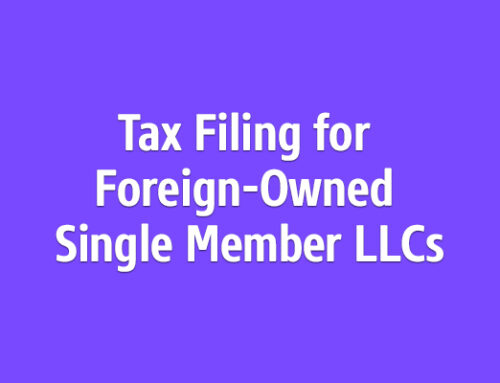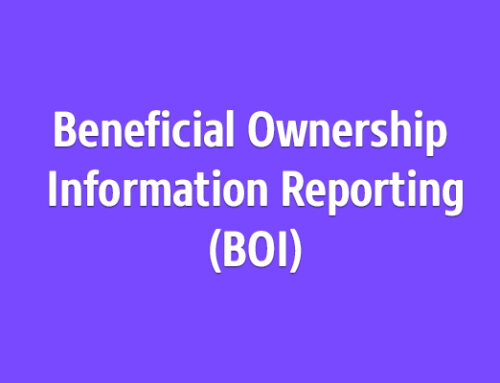A 1031 exchange, named after Section 1031 of the Internal Revenue Code (IRC), is a powerful tool for real estate investors. It allows for the deferral of capital gains taxes when one investment property is sold and another “like-kind” property is purchased within a specified time frame. This guide covers all the essential aspects and IRS guidelines related to 1031 exchanges.
Understanding the Basics of 1031 Exchange
Definition and Purpose
A 1031 exchange, also known as a like-kind exchange, is a transaction that allows investors to defer paying capital gains taxes on an investment property when it is sold, as long as another similar property is purchased with the profit gained by the sale. This strategy helps investors grow their real estate portfolios without immediate tax liability, thus maximizing the investment’s growth potential.
Key Benefits
- Tax Deferral: The primary benefit is the deferral of capital gains taxes, which can be substantial, depending on the appreciation of the property.
- Portfolio Growth: By deferring taxes, investors have more capital available to reinvest, allowing for the acquisition of more valuable properties or multiple properties.
- Diversification: Investors can diversify their holdings by exchanging properties in different locations or sectors.
Essential IRS Guidelines for 1031 Exchanges
Eligibility Criteria
- Like-Kind Property: Both the relinquished property (the one being sold) and the replacement property (the one being bought) must be of “like-kind.” According to the IRS, like-kind properties are those that are of the same nature or character, even if they differ in grade or quality. Most real estate properties are considered like-kind to each other.
- Investment or Business Use: Both properties involved in the exchange must be held for investment or used in a trade or business. Personal residences do not qualify.
- U.S. Property Requirement: Both properties must be located within the United States.
Timing Rules
- 45-Day Identification Period: After selling the relinquished property, the investor has 45 days to identify potential replacement properties. This identification must be in writing and meet specific criteria outlined by the IRS.
- 180-Day Exchange Period: The purchase of the replacement property must be completed within 180 days of the sale of the relinquished property or by the due date of the tax return (including extensions) for the tax year in which the relinquished property was sold, whichever is earlier.
Identification Rules
- Three-Property Rule: Investors can identify up to three potential replacement properties regardless of their market value.
- 200% Rule: Investors can identify more than three properties as long as the total value does not exceed 200% of the value of the relinquished property.
- 95% Rule: If the identified properties’ total value exceeds 200%, the investor must acquire 95% of the value of all identified properties.
Qualified Intermediary Requirement
A Qualified Intermediary (QI) must facilitate the exchange. The QI holds the proceeds from the sale of the relinquished property and uses them to acquire the replacement property. The investor cannot have actual or constructive receipt of the sale proceeds.
Holding Period
While the IRS does not specify a minimum holding period for properties involved in a 1031 exchange, they must be held for investment or business purposes. Typically, holding the property for at least two years is recommended to demonstrate intent.
Reverse 1031 Exchange
It is also possible to perform a reverse 1031 exchange, where the replacement property is purchased before selling the property being replaced. This type of exchange follows many of the same rules and requirements as a standard 1031 exchange.
Reporting the Exchange
Investors must report the 1031 exchange on IRS Form 8824, Like-Kind Exchanges, which is filed with their annual tax return. This form provides details of the properties involved and the timeline of the exchange. The taxpayer’s name must be the same on the tax return and on the title of both the sold and acquired properties.
Example of a 1031 Exchange
An investor owns an apartment building valued at $1 million, which has appreciated over time. Then the investor decides to diversify by buying a commercial retail space in Texas worth $1.2 million.
Through a 1031 exchange, the investor sells the apartment building and reinvests the proceeds into the retail space, deferring capital gains taxes. This qualifies as a like-kind exchange since both assets are real estate, allowing the investor to transition smoothly while postponing tax liabilities.
Selling the Apartment Building:
- Original Purchase Price: $600,000
- Depreciation Taken: $200,000
- Adjusted Basis: $600,000 – $200,000 = $400,000
- Sale Price: $1,000,000
- Capital Gain: $1,000,000 – $400,000 = $600,000
Tax Savings:
- Without 1031 Exchange: Assume the original purchase price of the apartment building was $600,000 and investor has taken $200,000 in depreciation over the years, this would bring adjusted basis to $400,000. The capital gain is $600,000 ($1,000,000 – $400,000). Assuming federal capital gain tax rate of 20%, the investor would owe $120,000 in capital gains tax.
- With 1031 Exchange: The investor defers the $120,000 capital gains tax, enabling the full $1 million to be reinvested in the Texas property.
*If the investor was in a state that had income tax, additional state capital gain tax would also be calculated and deferred.
Potential Challenges and Considerations
Boot
If the replacement property is of lesser value than the relinquished property, the difference is known as “boot,” and the investor will be liable for capital gains taxes on the boot amount.
Market Conditions
Market conditions can affect the ability to complete a 1031 exchange within the required timelines. It’s crucial to have a well-planned strategy and backup options.
Arm’s Length Transactions
When conducting a 1031 exchange, both the sale and purchase must be arm’s length transactions. This means you cannot engage in transactions with family members or anyone you have a personal or close relationship.
Legal and Financial Advice
Given the complexity of 1031 exchanges, it is advisable to seek guidance from tax professionals, attorneys, and financial advisors to ensure compliance with IRS regulations and to optimize the benefits.
Consequences for Non-Compliance with 1031 Exchange Rules
Non-compliance with 1031 exchange rules can result in significant penalties. Here are some key areas where non-compliance can lead to penalties:
Audit Risks
Improperly executed 1031 exchanges can trigger IRS audits. During an audit, the IRS will examine all aspects of the exchange, including the intent, the like-kind nature of the properties, and adherence to the timelines. An audit can result in additional penalties and interest.
Disqualification of the Exchange
Failure to use a Qualified Intermediary or improper identification of replacement properties can lead to the disqualification of the entire exchange. This means the investor would not be able to defer the capital gains taxes and would owe taxes on the sale of the relinquished property.
Immediate Tax Liability
If the 1031 exchange fails to meet the IRS requirements, the entire transaction may be disqualified. This would result in immediate recognition of capital gains, leading to a substantial tax liability for the investor.
Interest and Penalties
In addition to the capital gains taxes, the IRS may impose interest and penalties for late payment if the 1031 exchange is disqualified. The penalties can include:
- Failure-to-File Penalty: A penalty for failing to file the necessary tax forms on time.
- Failure-to-Pay Penalty: A penalty for failing to pay the owed taxes by the due date.
- Accuracy-Related Penalty: A penalty for underpayment of taxes due to negligence or substantial understatement of income.
Conclusion
A 1031 exchange is a valuable tool for real estate investors looking to defer capital gains taxes and grow their portfolios. Understanding the IRS guidelines and requirements is crucial to successfully executing a 1031 exchange. With careful planning and professional advice, investors can leverage this strategy to enhance their real estate investment outcomes.
References;
Like-Kind Exchanges – Real Estate Tax Tips
https://www.irs.gov/businesses/small-businesses-self-employed/like-kind-exchanges-real-estate-tax-tips
About Form 8824, Like-Kind Exchanges
https://www.irs.gov/forms-pubs/about-form-8824
Instructions for Form 8824
https://www.irs.gov/instructions/i8824
Publication 544, Sales and Other Dispositions of Assets
https://www.irs.gov/forms-pubs/about-publication-544
Disclaimer
This article is intended for informational purposes and should not be taken as legal or tax advice. You must consult with your tax, financial or legal adviser about your unique financial situation before acting on anything discussed in this article. TaxBasket LLC is providing informational content for general guidance to help small business owners become more aware of certain issues and topics and this article must never be considered as a substitute for advice provided by your tax, financial or legal advisers. TaxBasket LLC or its members cannot be held liable for any use or misuse of this content.




